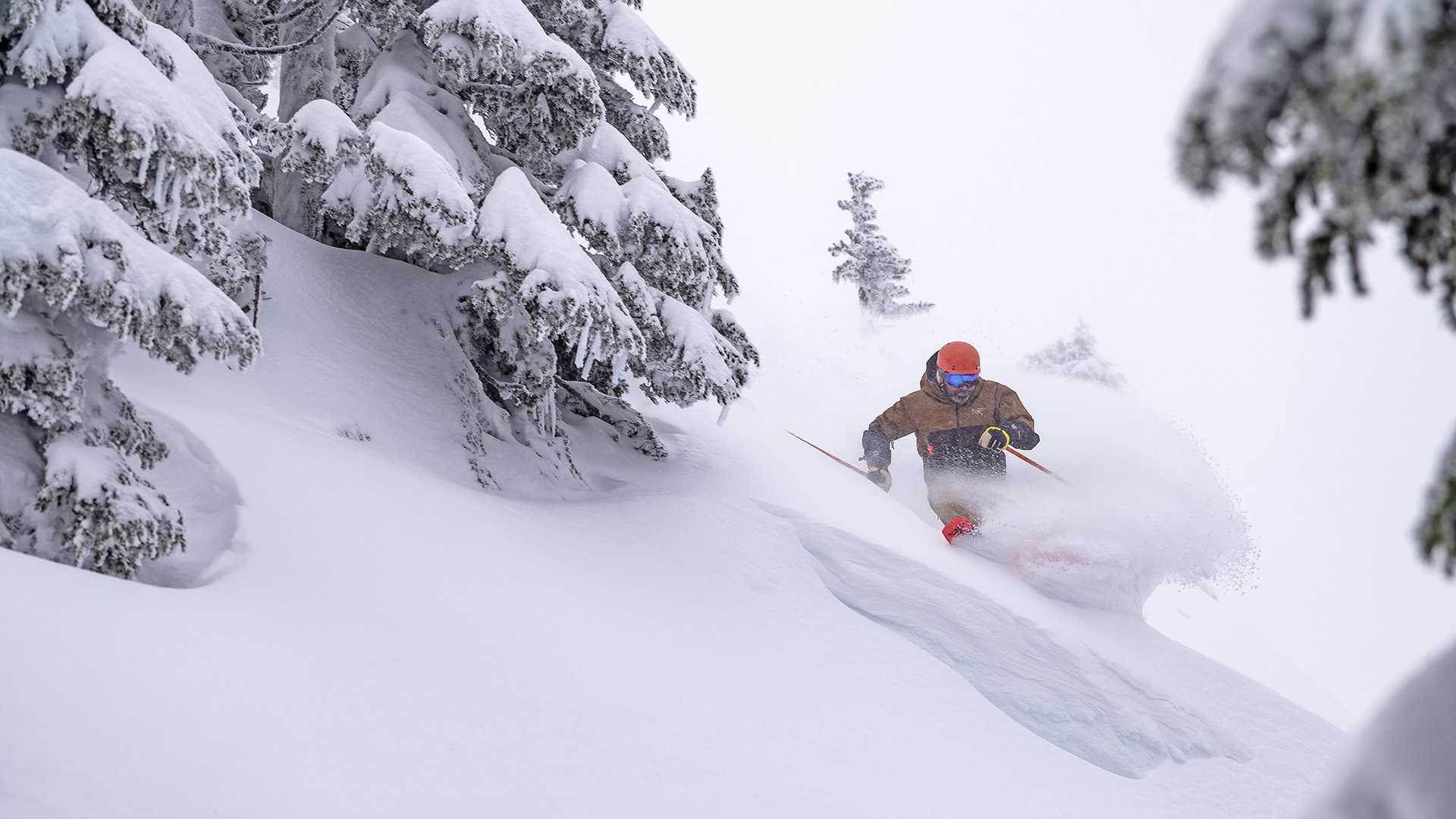
CALL THEM WHAT YOU WILL. FREERIDE, POWDER, TOURING, BACKCOUNTRY. THESE SKIS WERE BUILT FOR THE DEEP STUFF.
It’s easy to test carving and all-mountain skis, we just ski the hill. But that approach doesn’t cut it for the boards reviewed in the next few pages. For these skis, we took testing a step further, often literally. We had to go beyond the limits.
We logged thousands of metres of climbing to test the versatility of touring boards in diverse conditions—the kind of snow you’re bound to find in the backcountry. We took freeride skis to backside steeps to determine how they handle tricky terrain, airs and speed. And for powder skis, it was all about deep snow. We sent a team of testers to Backcountry Snowcats, north of Whistler, where steep trees and open bowls with dependable powder are ideal testing grounds.
In spring, once the snow was gone, our Ski Canada test team compiled notes and comments into the following reviews. Each review includes information about the ski’s construction, performance and traits. We hope you use this intel to inform your ski buying. Read the reviews, do some online research, visit a shop or two. Then, if you can, test your top picks.
BRASS TACKS
But maybe we’re moving too fast. The skis you’ll find reviewed in the next eight pages range from feathery touring sticks to power planks used by the most daring skiers. They’re all designed for exploring, no matter if you are far beyond the resort or checking out somewhere just a little steeper and deeper. But that’s where the similarities end. One skier’s touring ski is another’s dedicated powder ski, so rather than box them into categories, we’ve organized the skis from lightest to heaviest. And in the descriptions we’ve highlighted what we think the ski does best.
If you’re not certain you need a dedicated powder ski, read Nigel Harrison’s advice in Why Ride a Powder Ski? (below).
And if that doesn’t convince you, we’ve developed a simple formula to help you decide.
Ideal number of skis = N + 1
(N is the number of skis you already own.)
If the math has you scratching your head remember we’re editors, not mathematicians. Just know we support your decision to buy another pair, and keep reading.
SKI CATEGORIES
We like to categorize things. It used to be easy with skis. Not so anymore. There are so many unique skis it’s hard to draw lines. Geography differentiates norms and personal preferences are, well, personal. Some think a 106mm waist is perfect for all-mountain skiing, while others call it a powder ski. Regardless, we’ll take a stab at defining a few ski categories.
On-piste:
made for carving groomers; 60 to 85mm waist widths (reviewed in 2023/24 SKI CANADA TEST post)
All-mountain:
go everywhere and do it all; 80 to 105mm waist widths (reviewed in 2023/24 SKI CANADA TEST post).
Freeride or big-mountain:
more soft-snow focused than all-mountain and more playful than powder; 100 to 115mm.
Powder:
for deep days at the resort or heli- and cat-skiing; 110 to 125mm.
Touring:
the focus is on lightweight construction; 85 to 115 mm.
Tested Skis:
WHY BUY A POWDER SKI?
Seasoned ski pro Nigel Harrison headed to Backcountry Snowcats in Pemberton, B.C., to test dedicated powder skis. Starting each morning on narrower skis (96mm waist) and progressing throughout the afternoon to fatter (120mm waist), Harrison discovered at least five reasons why we should all buy a pair of wide boards this season. His ultimate conclusion: more ski equals less energy expended and more fun enjoyed.
Less learning required: By taking a wider ski into powder, you can stick with your regular technique instead of having to adapt skills and tactics for the deep snow.
Big platform, big fun: A wider ski creates a solid platform that offers support at the end of each turn when pressure is at its greatest. Because this happens so fast on a fat ski, a skier can change tactics on the fly to match changing environments. As all the experts know, a nimble ski that can float in powder is a lot more fun.
“It’s a safety issue, darling”: Wider skis save you a ton of energy, meaning you’re less tired, more supple, less defensive and less likely to get injured. Ultimately, you’ll be more likely to contribute to the household budget this season.
Skin in the game: If you’re breaking trail while ski touring, a fatter ski makes skinning a lot easier, since you aren’t sinking so far into the snow with every step.
It’s not about how good you are: Just because the guy next to you has skinnier skis doesn’t mean he’s a better skier. It’s a matter of choice—and of goals. If you’re doing a couple of powder laps before hitting the groomers, a skinny ski will do. If you don’t plan on touching groomers until April, a fatter ski will help you save energy, stay safe and have fun.
Thanks to ACMG ski guide Steve Ludwig, along with Reg and Kathy Milne, and the crew at Backcountry Snowcats, for sharing thoughts, expertise and time.
_NIGEL HARRISON
Explore More Ski Testing
2022
SKI TEST
2021
SKI TEST
2020
SKI TEST




